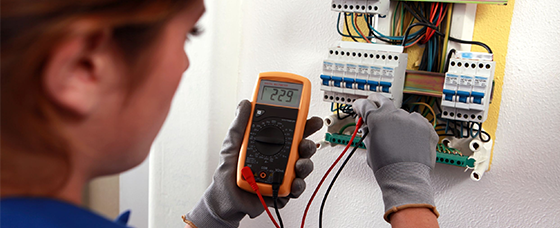Have you ever gotten that weird feeling that something in your house is off? No, not ghosts (hopefully), but your electrical system. It’s easy to ignore minor flickers or the occasional burning smell—until something major happens. And trust me, when it comes to electricity, you don’t want to wait until sparks start flying.
If your home has flickering lights, tripping breakers, or outlets that look like they’ve been through a battle, it’s time to schedule an electrical inspection. Catching these issues early can prevent fires, electrocution, and costly repairs.
In this article, we’ll go over six clear signs your home might need an electrical inspection. We’ll also cover why it matters and what to do if you notice these warning signs.
1. Your Circuit Breakers Trip Constantly
Circuit breakers are designed to shut off power when they detect an overload. That’s a good thing—it keeps your house from catching fire. But if your breakers trip more often than your WiFi drops, it’s a sign your electrical system is struggling.
Why this happens:
- Overloaded circuits
- Outdated wiring
- A faulty breaker panel
Quick Tip: If a single appliance trips the breaker every time you use it, plug it into a different outlet. If the problem persists, the issue might be with the wiring, not the appliance.
2. Flickering or Dimming Lights
No, your house is not haunted (probably). Flickering lights usually mean your wiring can’t handle the electrical load, especially when using high-powered appliances.
Possible causes:
- Loose or faulty wiring
- Overloaded circuits
- Voltage fluctuations
Info: If multiple lights flicker when using an appliance like a microwave or hairdryer, your electrical system may need an upgrade.
3. You Smell Something Burning (but can’t find the source)
If you ever smell burning plastic or something electrical, stop what you’re doing and investigate. A burning smell can mean wires are overheating, which is a major fire hazard.
Danger: If you detect a burning smell near outlets or the breaker box, turn off the power and call an electrician immediately. Electrical fires can start inside walls, where you won’t see the damage until it’s too late.
4. Outlets and Switches Feel Warm or Spark When Used
Your outlets should never feel warm to the touch. If they do, it means the wiring behind them is getting hot, which could lead to a fire.
Signs of trouble:
- Warm or discolored outlets
- Sparks when plugging in or unplugging devices
- Frequent power surges
Fact: Old two-prong outlets (without a grounding pin) are outdated and unsafe. If your home still has them, an upgrade is overdue.
5. You Have an Old Home With Outdated Wiring
If your house was built before the 1980s and the wiring has never been updated, you might have some serious electrical risks hiding behind your walls. Older homes often have aluminum wiring or knob-and-tube systems that are fire hazards.
Signs your home has outdated wiring:
- Breakers trip frequently
- Outlets don’t hold plugs properly
- Lack of GFCI outlets (the ones with reset/test buttons)
Suggestion: If you’re not sure about your home’s wiring, get an inspection before adding any major appliances or renovations.
6. You’ve Never Had an Electrical Inspection (or it’s been a long time)
When was the last time your home had an electrical check-up? If you can’t remember, it’s time to book one. Inspections are especially important if:
- Your home is over 40 years old
- You’ve recently had a major renovation
- You’ve added large appliances like an HVAC system or electric vehicle charger.
How Often to Get an Electrical Inspection
| Home Age / Condition | Inspection Frequency |
| Newer than 10 years | Every 10 years |
| 10-40 years old | Every 5 years |
| Over 40 years old | Every 3 years |
| After major renovations | Immediately |
Conclusion
Ignoring electrical problems is like ignoring a leaky roof—it’s only going to get worse. If you notice frequent breaker trips, flickering lights, burning smells, or warm outlets, don’t wait. An electrical inspection can catch issues before they become disasters.
Final takeaway: A simple inspection today could save you from an expensive repair—or worse, an electrical fire—down the road.
Frequently Asked Questions
How much does an electrical inspection cost?
It varies by location, but expect to pay between $150 and $500, depending on the size of your home and the complexity of the inspection.
Can I do an electrical inspection myself?
Unless you’re a licensed electrician, it’s best to leave it to the pros. They have the tools and expertise to spot issues that aren’t visible to the untrained eye.
What happens during an electrical inspection?
An electrician will check your wiring, outlets, circuit breakers, and electrical panel for any signs of wear, overheating, or safety violations.
How long does an electrical inspection take?
Most inspections take between 1 to 3 hours, depending on the size of your home and the complexity of the electrical system.
Is an inspection necessary if I’m buying an old home?
Absolutely! A pre-purchase electrical inspection can help you avoid buying a home with major electrical issues (and a massive repair bill).
